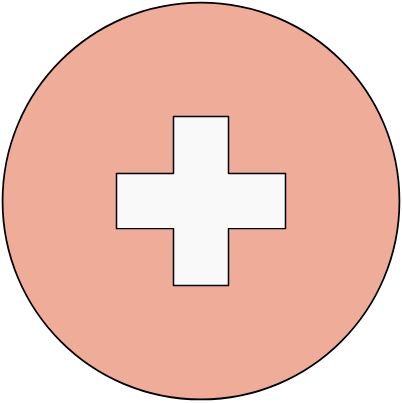SIDE EFFECTS OF NEXPLANON
learn about common side effects, possible risks of using NEXPLANON, and information on who shouldn’t use NEXPLANON


what are the most common side effects of NEXPLANON?
| changes in menstrual bleeding patterns (menstrual periods) | In studies, 1 in 10 women stopped using NEXPLANON because of an unfavorable change in their bleeding pattern. You may have:
Tell your doctor immediately if you think you may be pregnant or your menstrual bleeding is heavy and prolonged. |
|---|---|
| Other frequent side effects that cause women to stop using NEXPLANON include: |
|
| Other common side effects of NEXPLANON: |
Implants have been reported to be found in a blood vessel, including a blood vessel in the lung, which can be associated with shortness of breath, cough and/or the coughing up of blood or blood-stained mucus. This is not a complete list of possible side effects. For more information, ask your healthcare professional for advice about any side effects that concern you. You may report side effects to the FDA at 1-800-FDA-1088. |
don’t use NEXPLANON if you …
Are pregnant or think you may be pregnant
Have, or have had blood clots, such as blood clots in your leg (deep vein thrombosis), lungs (pulmonary embolism), eyes (total or partial blindness), heart (heart attack), or brain (stroke)
-
Have liver disease or a liver tumor
-
Have unexplained vaginal bleeding
-
Have breast cancer or any other cancer that is sensitive to progestin (a female hormone), now or in the past
-
Are allergic to anything in NEXPLANON
-
Are pregnant or think you may be pregnant
-
Have, or have had blood clots, such as blood clots in your leg (deep vein thrombosis), lungs (pulmonary embolism), eyes (total or partial blindness), heart (heart attack), or brain (stroke)
-
Have liver disease or a liver tumor
-
Have unexplained vaginal bleeding
-
Have breast cancer or any other cancer that is sensitive to progestin (a female hormone), now or in the past
-
Are allergic to anything in NEXPLANON
tell your doctor if you have or have had any of these conditions
Your doctor can suggest a different method of birth control.
DIABETES
HIGH CHOLESTEROL
HIGH TRIGLYCERIDES
HAVE HEADACHES
GALLBLADDER PROBLEMS
KIDNEY PROBLEMS
HISTORY OF DEPRESSION
HIGH BLOOD PRESSURE
here are some other possible risks with NEXPLANON
| improper insertion | The implant may not be placed in your arm due to a failed insertion. If this happens, you may become pregnant. To ensure NEXPLANON is properly inserted, immediately after insertion, you and your healthcare professional will feel for the implant under your skin. If you can’t feel the implant, be sure to tell your healthcare professional. |
|---|---|
| location and removal may be difficult | Location and removal of the implant may be difficult or impossible because the implant is not where it should be. Special procedures, including surgery in the hospital, may be needed to remove the implant. If the implant is not removed, the effects of NEXPLANON will continue for a longer period of time. Implants have been found in the pulmonary artery (a blood vessel in the lung). If the implant cannot be found in the arm, your healthcare professional may use x-rays or other imaging methods on the chest. If the implant is located in the chest, surgery may be needed. |
| other problems related to insertion and removal |
|
| ectopic pregnancy | If you become pregnant while using NEXPLANON, you have a slightly higher chance that the pregnancy will be ectopic (occurring outside the womb) than do women who do not use birth control. Unusual vaginal bleeding or lower stomach (abdominal) pain may be a sign of ectopic pregnancy. Ectopic pregnancy is a medical emergency that often requires surgery. Ectopic pregnancies can cause serious internal bleeding, infertility, and even death. Call your healthcare professional right away if you think you are pregnant or have unexplained lower stomach (abdominal) pain. |
| ovarian cysts and breast cancer | Cysts may develop on the ovaries and usually go away without treatment, but sometimes surgery is required to remove them. It is not known whether NEXPLANON use changes a woman’s risk for breast cancer. If you have breast cancer now, or have had it in the past, do not use NEXPLANON because some breast cancers are sensitive to hormones. |
| serious blood clots | NEXPLANON may increase your chance of serious blood clots, especially if you have other risk factors such as smoking. It is possible to die from a problem caused by a blood clot, such as a heart attack or a stroke. Some examples of serious blood clots are blood clots in the:
The risk of serious blood clots is increased in women who smoke. If you smoke and want to use NEXPLANON, you should quit. Your healthcare professional may be able to help. Tell your healthcare professional at least 4 weeks before if you are going to have surgery or will need to be on bed rest. You have an increased chance of getting blood clots during surgery or bed rest. |
| other risks | A few women who use birth control that contains hormones may get:
If you feel you have a broken or bent implant, please contact your doctor. |
| broken or bent implant | Breakage or bending of the implant while it is in your arm may occur due to external forces (such as manipulation of the implant or contact sports). A broken implant may move from the insertion site. If you feel that the implant may have broken or bent while in your arm, contact your healthcare professional. |
call your doctor immediately if you have …
| pain in your lower leg | That does not go away |
|---|---|
| severe chest pain | Or heaviness in your chest |
| sudden shortness of breath | Sharp chest pain or coughing blood |
| symptoms of severe allergic reaction | Such as swollen face, tongue, or throat or have trouble breathing or swallowing |
| sudden severe headache | Unlike your usual headaches |
| weakness or numbness | In your arm or leg or trouble speaking |
| sudden blindness | Either partial or complete |
| yellowing of your skin or whites of your eyes | Especially with fever, tiredness, loss of appetite, dark-colored urine, or light-colored bowel movements |
| severe pain, swelling or tenderness | In the lower stomach (abdomen) |
| lump in your breast | You should be checking regularly |
| problems sleeping | Or lack of energy, tiredness, or you feel very sad |
| heavy menstrual bleeding | Heavier than usual |
| suspect the implant is broken or bent | While in your arm due to external forces |

still have questions?
Check out our FAQs.
These may be helpful to you.